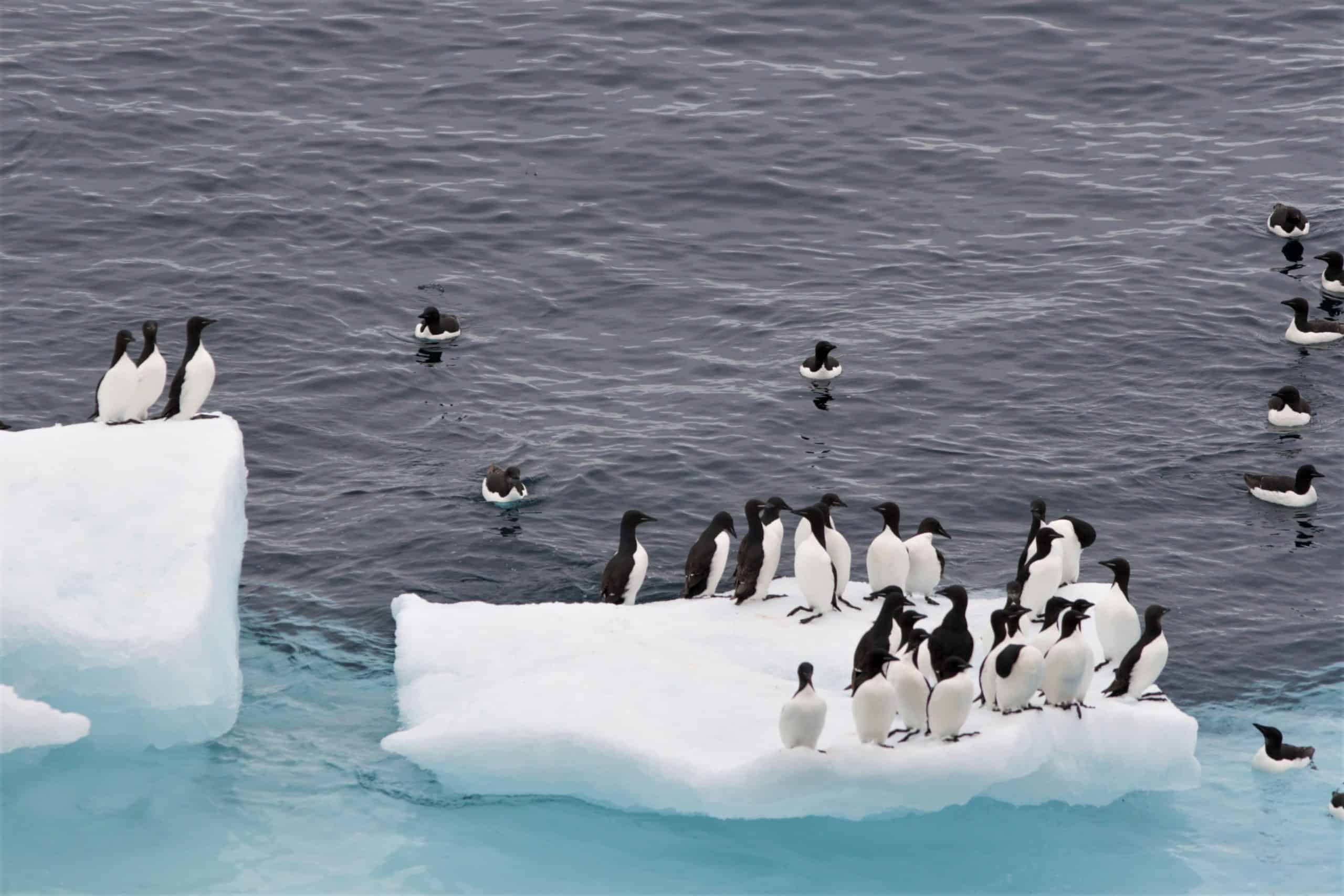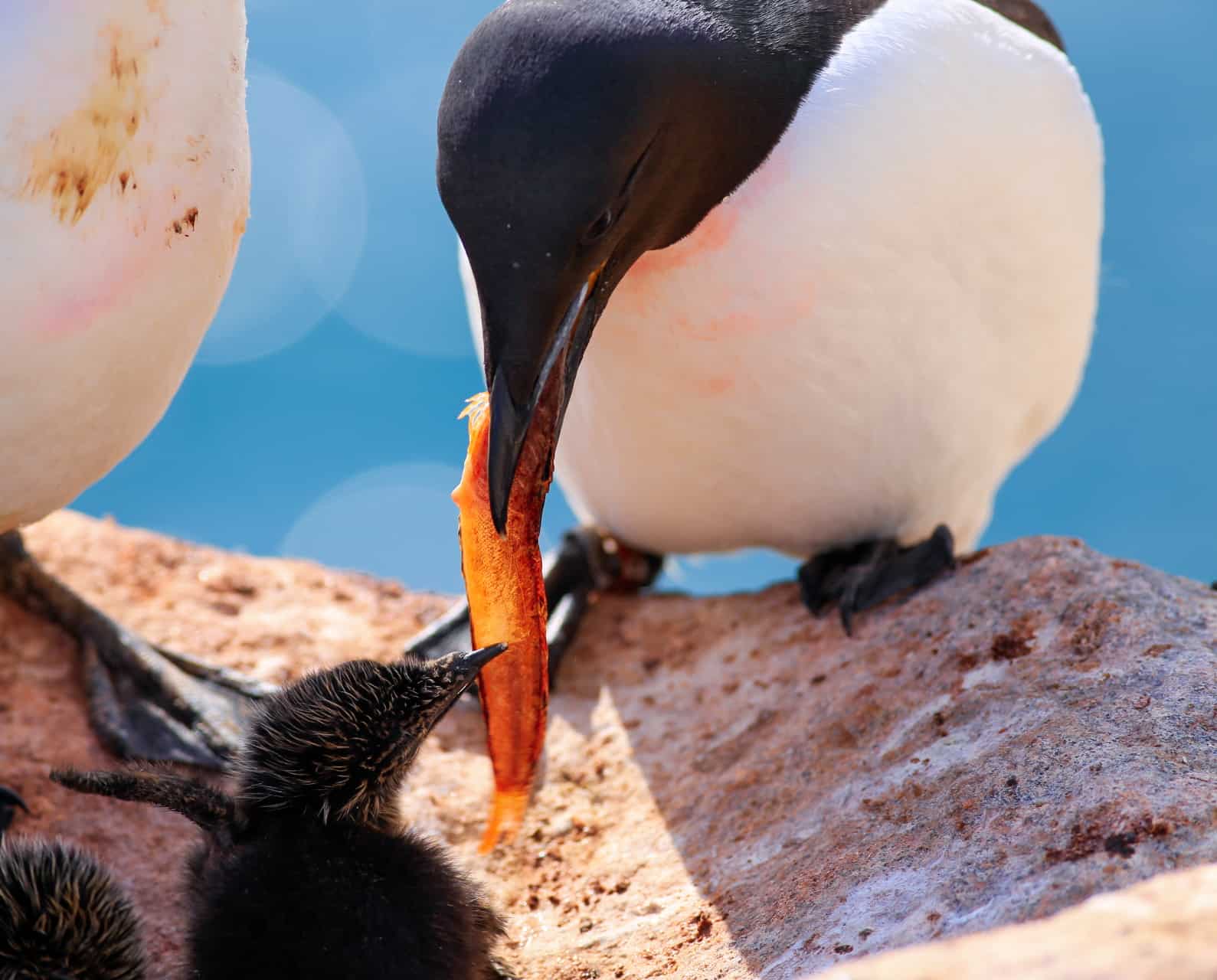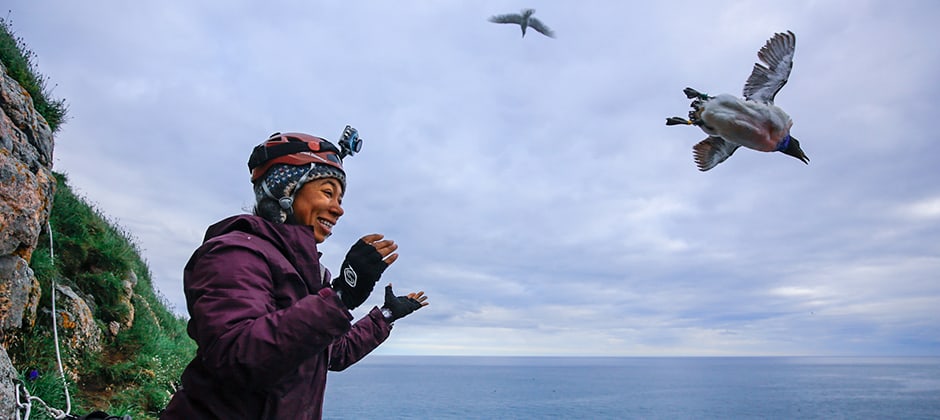Share this article
Adapted to Arctic cold, murres are vulnerable to a warming climate
When researchers heard reports of thick-billed murres dying on their nests on sunny days on the Hudson Bay in Nunavut, Canada, they wondered if the birds were having trouble dealing with the Arctic’s warmer-than-normal temperatures.
Past research had focused on how well adapted these birds were to cold temperatures. But those same adaptations could make thick-billed murres (Uria lomvia) vulnerable to the warmer weather being documented in the region under climate change.
“One thing about murres is they have a fairly long incubation period in the day,” said Emily Choy, a postdoctoral fellow at McGill University and Environmental and Climate Change Canada. “They spend about 12-to-24-hour shifts incubating eggs. They take turns—males during the day and the female at night, while the other bird goes offshore to forage for fish.”
That behavior keeps them in the sun longer. In a study published in the Journal of Experimental Biology, Choy and her colleagues wanted to document if murres were vulnerable to warmer temperatures and why.

Thick-billed murres near Coats Island in northern Hudson Bay. Credit: Kyle Elliott
Her team set out in 2019 on Coats Island in the northern Hudson Bay, where a large seabird colony nests on cliffs. The researchers captured murres at their nesting sites and placed them inside a metabolic chamber with a heating box inside. As they increased the temperature two to three degrees, they took measurements every 30 minutes of the birds’ body temperature, oxygen consumption, water loss and other physiological traits, and they used cameras to monitor their behavior.
The murres had very limited heat tolerance, the researchers found. At 21 degrees Celsius, they exhibited signs of heat stress. They started losing water at a faster rate and were unable to dissipate heat efficiently. Cameras showed them panting and spreading their wings. When the birds were seen dying on their nests, temperatures had reached 21 to 23 degrees. Larger murres ended up being less heat tolerant than smaller murres.

A thick-billed murre feeds its young. Credit: Douglas Noblet
Their heat intolerance likely has to do with their large size. Weighing between 800 and just over 1,000 grams, the large birds can better maintain heat in cold weather, Choy said. But during the breeding season when they spend substantial time exposed to the sun, thick-billed murres have been known to abandon their nests, lose their eggs and die at warmer temperatures. They are also parasitized by mosquitoes.
The researchers plan to look more at other ways warmer temperatures may affect the Arctic birds.
“We identified heat stress as a factor, and now we’re looking to identify other factors,” Choy said. “If we lessen the impact of stressors we can control, we can help the birds deal with heat.”
Header Image:
Researcher Emily Choy studies thick-billed murres on Coats Island in northern Hudson Bay.
Credit: Douglas Noblet








